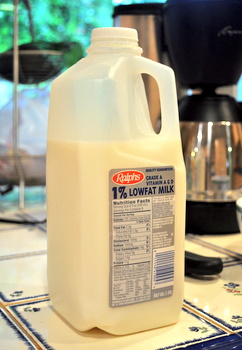
New nutrition labels that went into effect in 2021 mean it's now easier to see the calories and serving sizes as well as the total fat, saturated fat and trans fat.
Whole milk vs skim full#
Even the latest dietary guidelines for Americans urge people to avoid the full fat, and following this. In 1990, Congress implemented the Nutritional Labeling and Education Act, which required all packaged foods to have nutrition labeling and created a standard for terms like "low fat" and "light." In 2006, nutrition labels were updated to include trans fat content. Ap11:24 AM EDT F or years you’ve been told to go for skim over full-fat dairy. Voluntary nutritional labeling on milk cartons didn't appear until 1974, when the FDA advised all foods should include nutritional information. The monikers for milk variations may have evolved since the days when it was delivered by hand, but that doesn't mean the labels are any less confusing. Two percent milk, 1 percent milk and skim milk have been stripped of milk fats to varying degrees - but to understand how those milks relate to whole milk, you've got to remember that whole milk could be called "3.5 percent milk" or "3.25 percent milk." So 2 percent milk has about 60 percent the amount of fat as whole milk, while 1 percent has about 30 percent the amount. In fact, the Food and Drug Administration (FDA) mandates that the milk fat percentage by weight in whole milk should not fall below 3.25 percent, far below the 100-percent milk fat the name "whole milk" may imply. If we're talking percentages, whole milk is not 100 percent fat - cow milk contains 3.25 to 3.5 percent milk fat, which equals about 8 grams of fat per 8 ounces (237 milliliters) of milk.

So its usually recommended that kids 1 to 2 years.

For instance, milk labeled "2 percent" is 2 percent milk fat by weight - not 2 percent the amount of fat found in whole milk. Babies and toddlers need fat in their diets for a variety of reasons, including healthy brain development.

The percentage listed on a milk carton label actually represents how much fat the milk contains by weight.


 0 kommentar(er)
0 kommentar(er)
